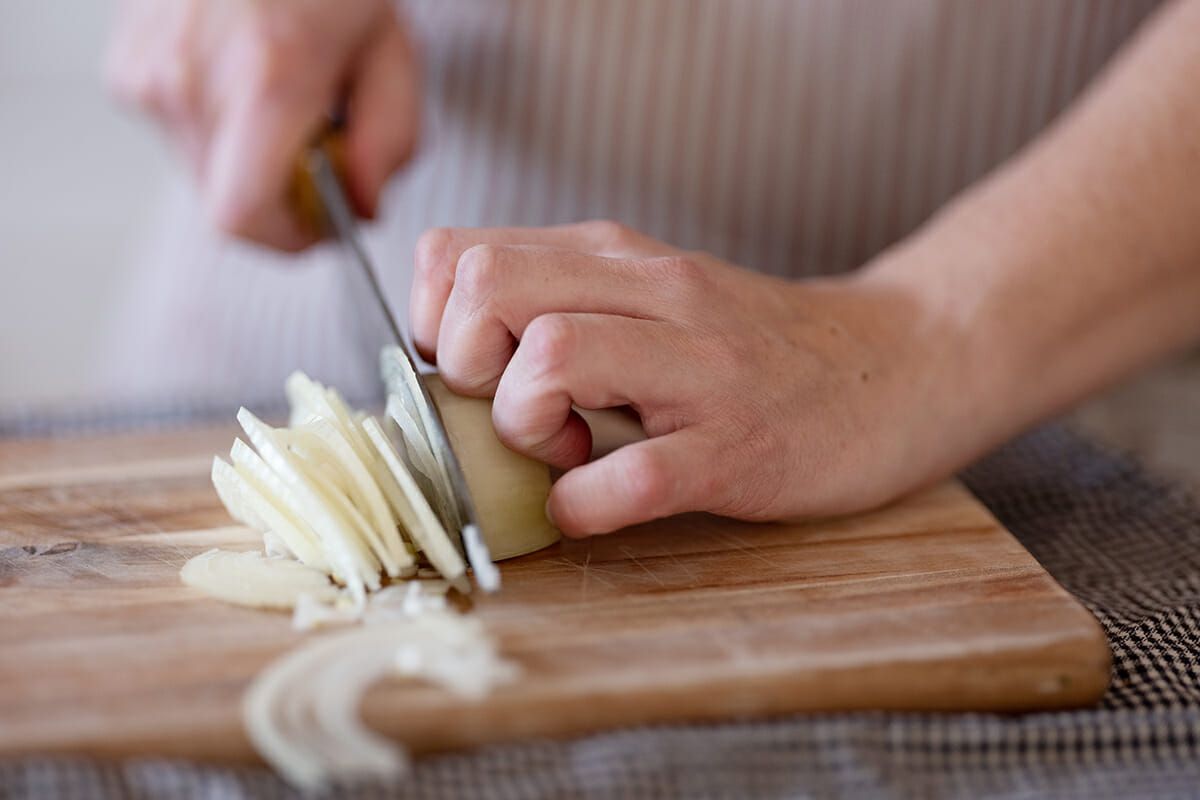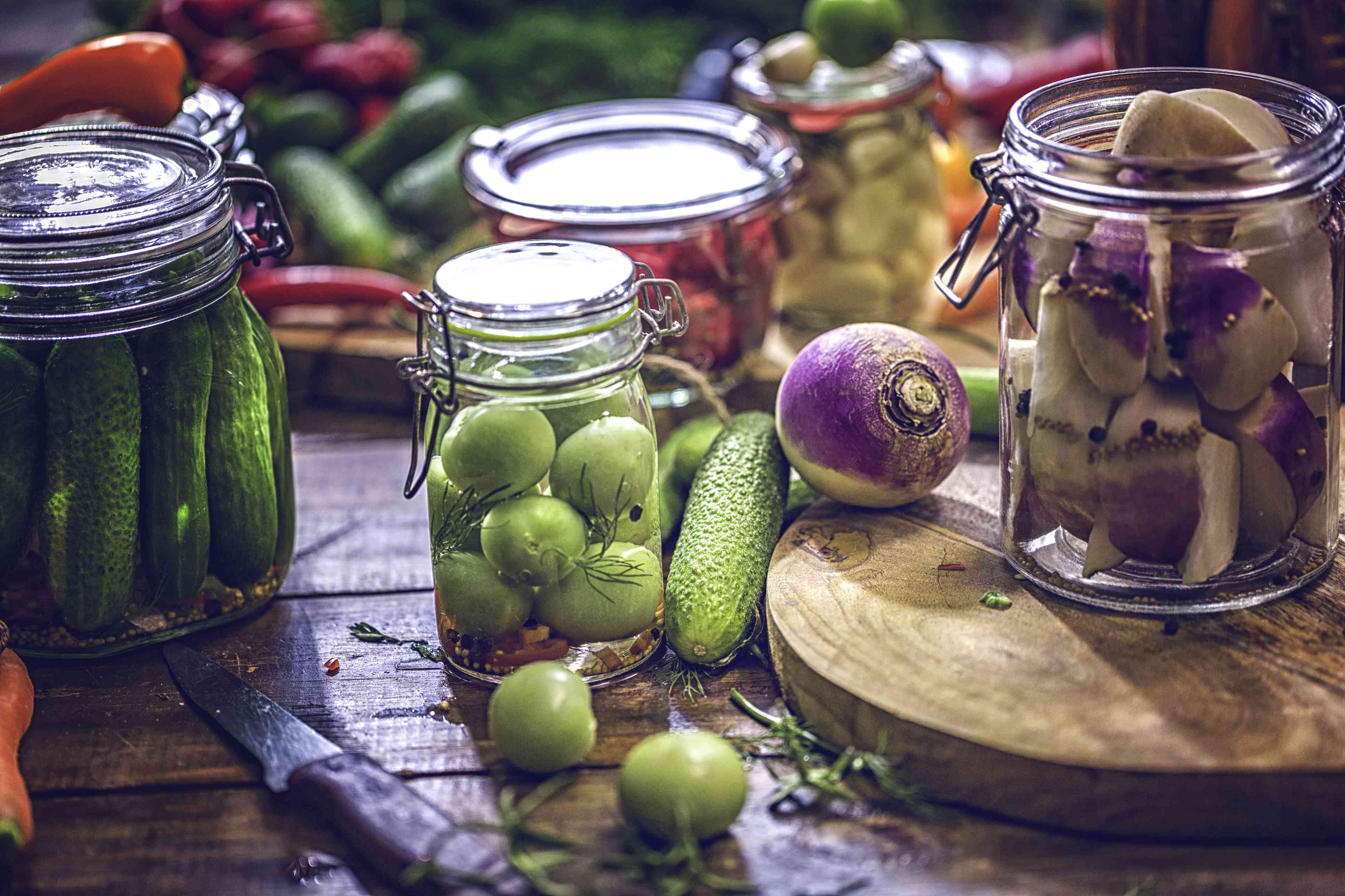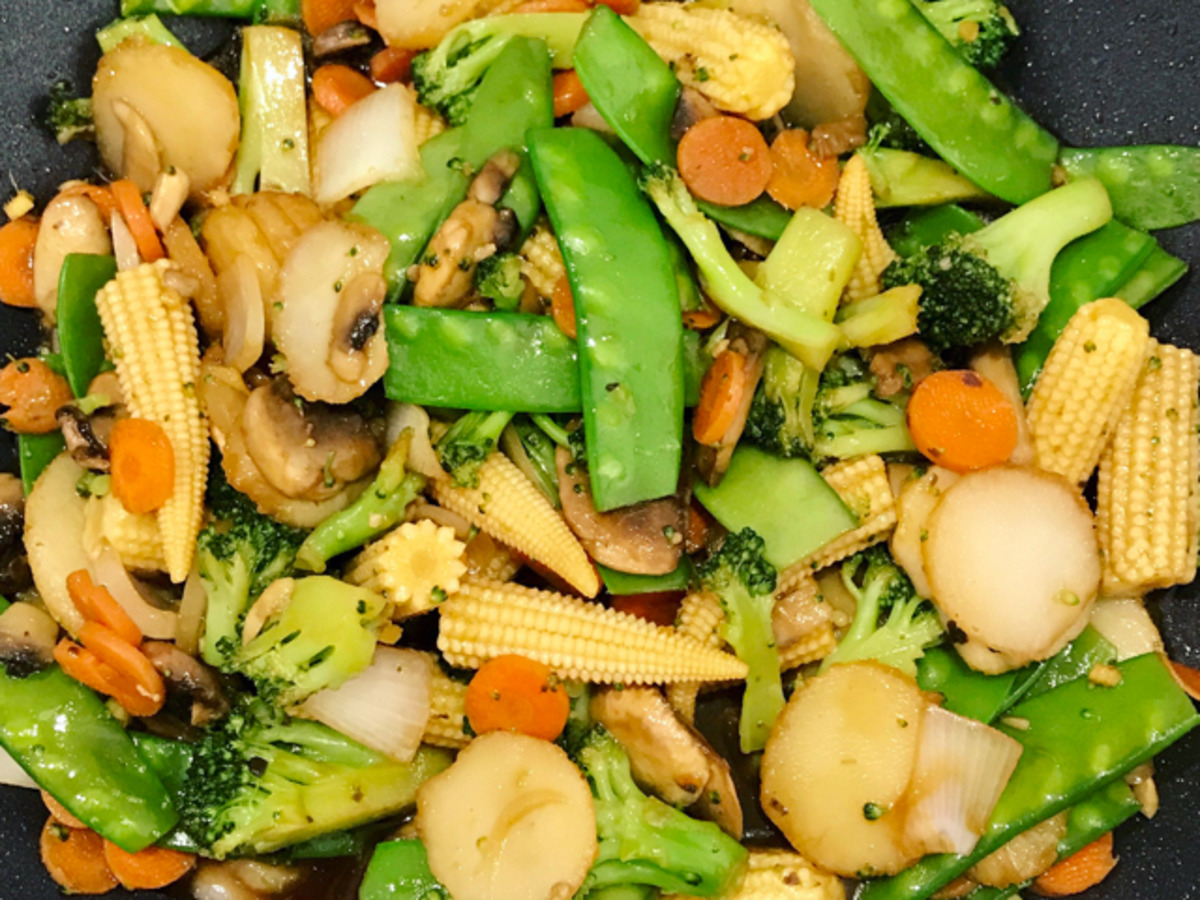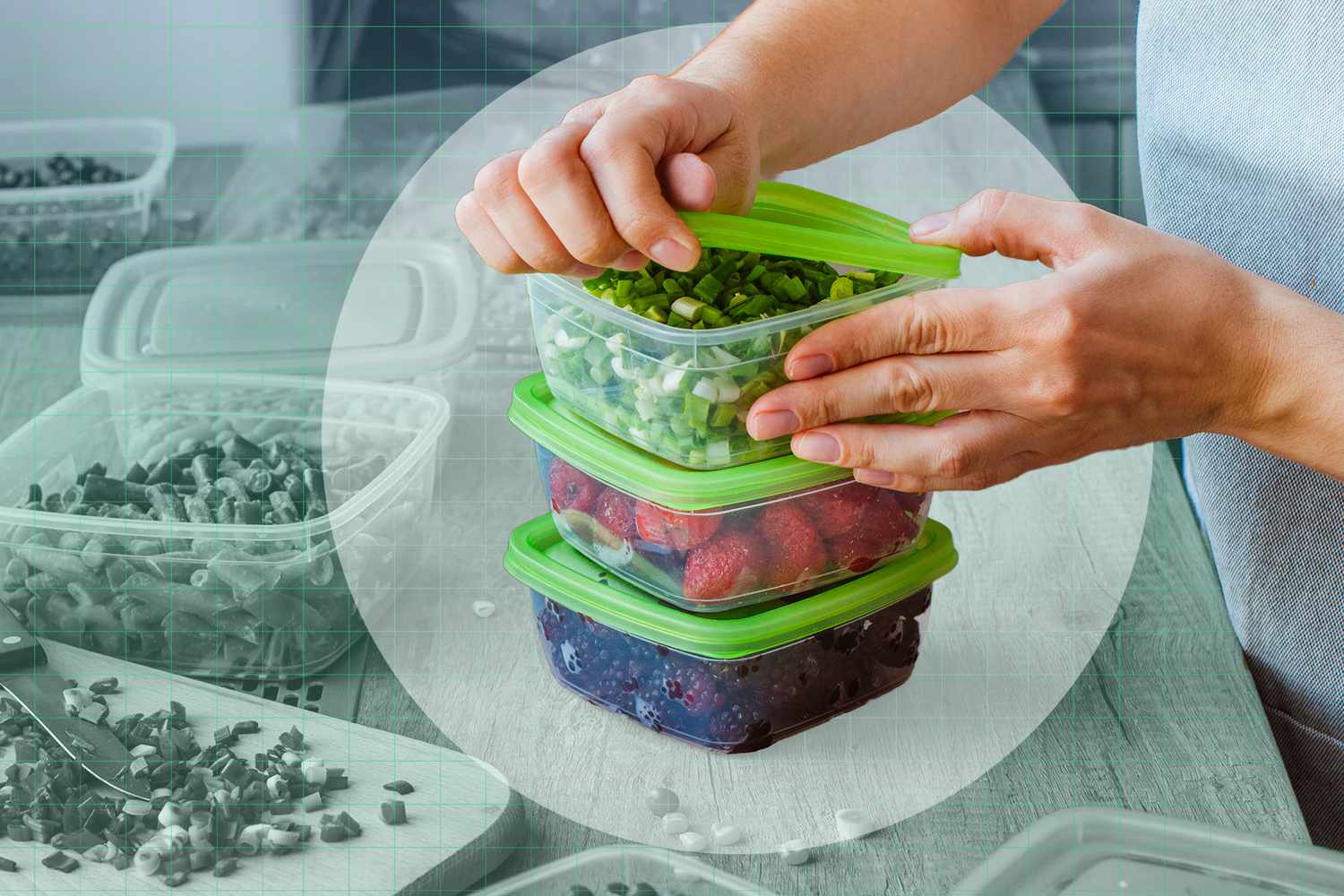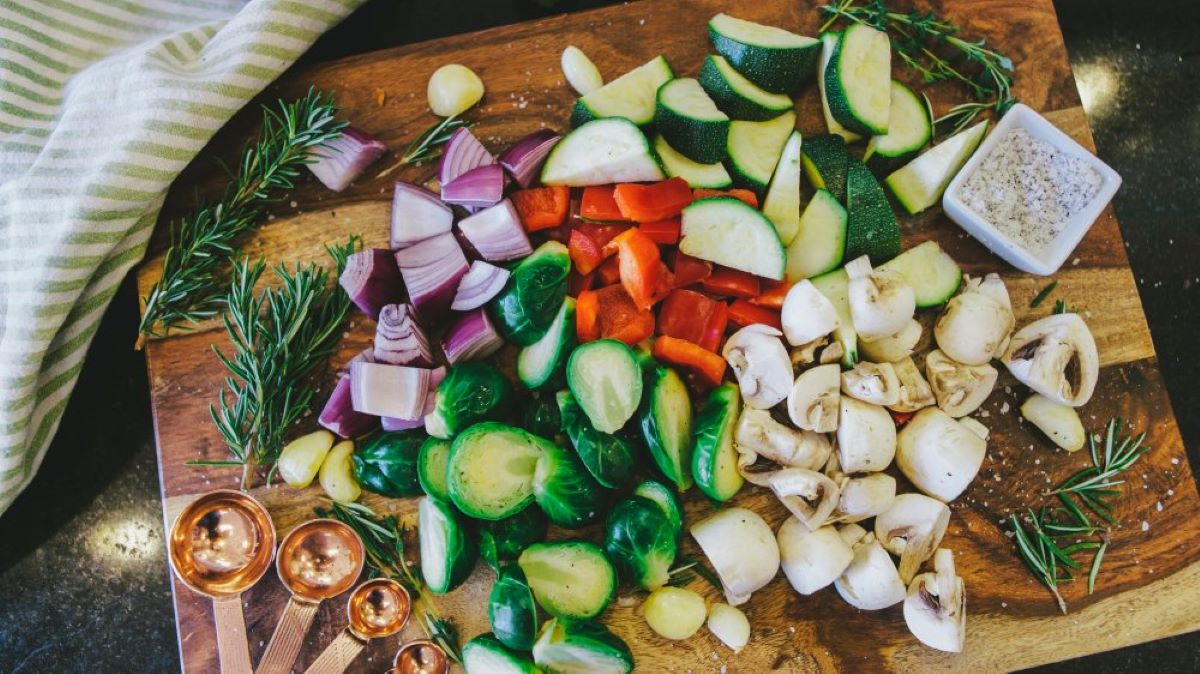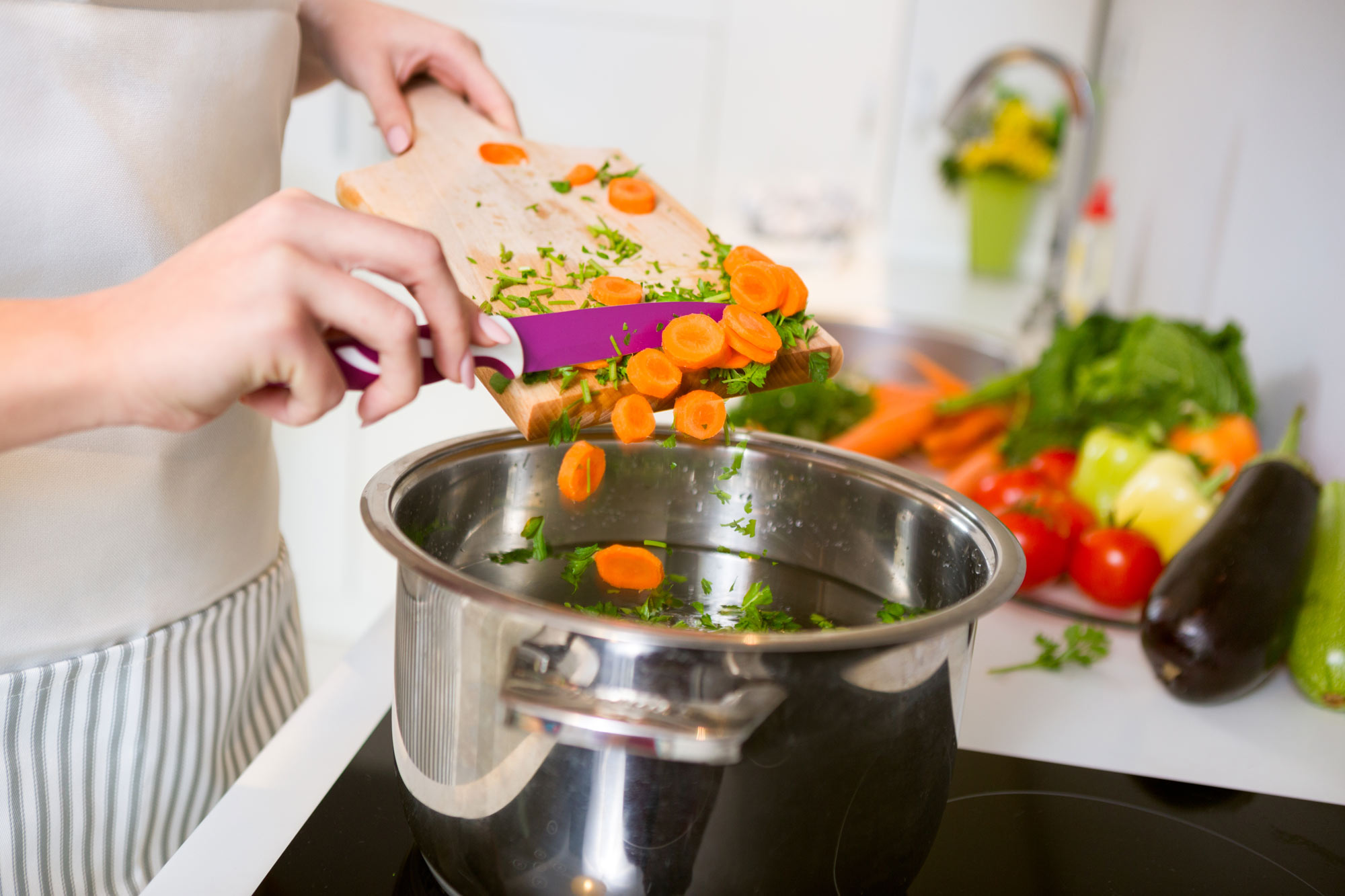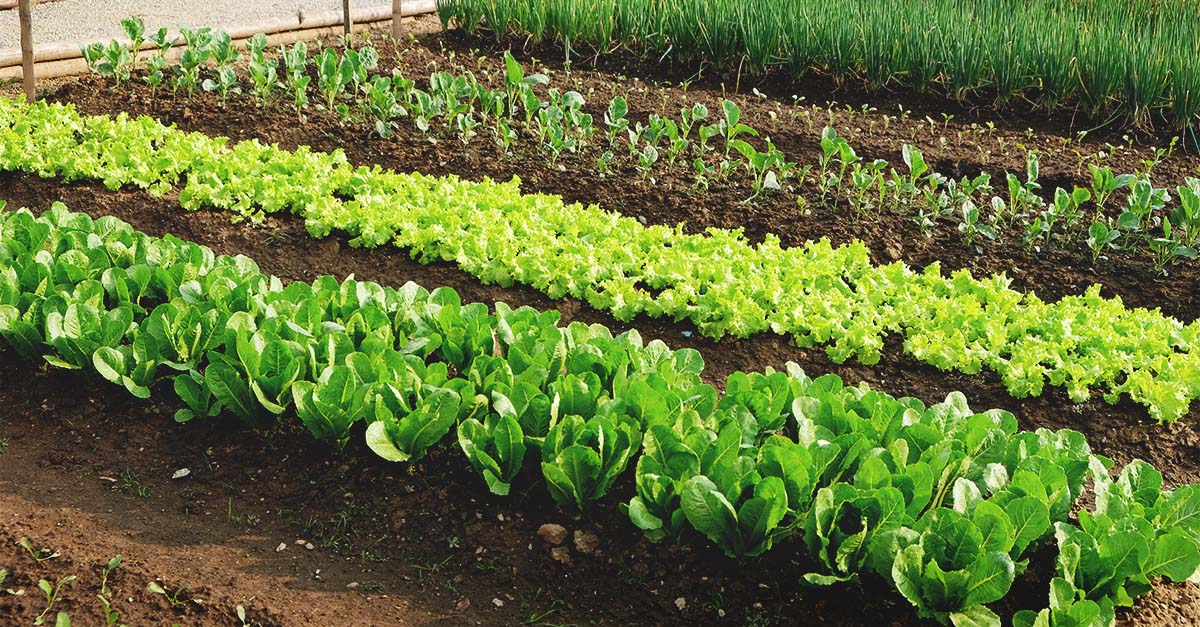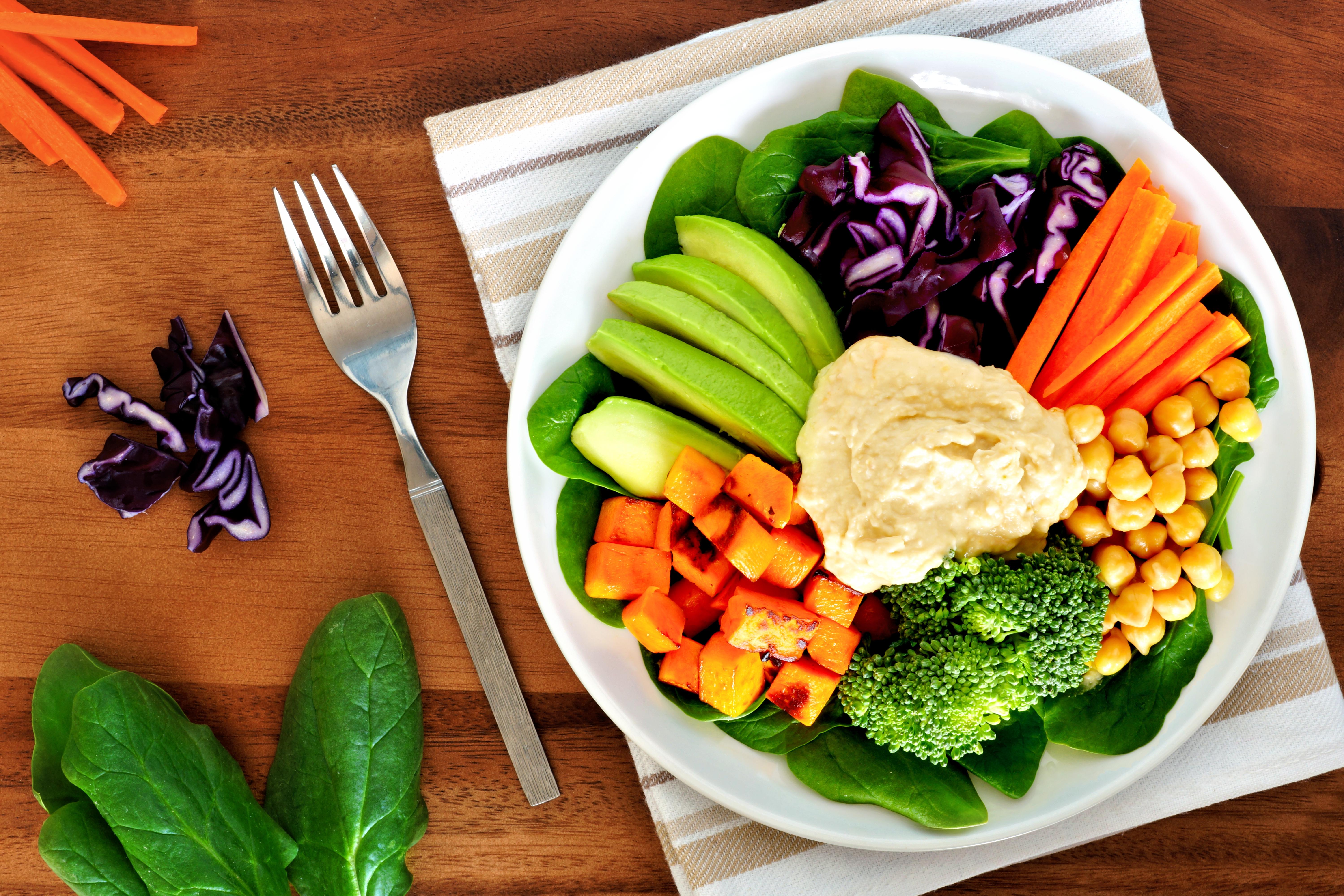Home>Gardening News and Trends>Latest News>How To Dehydrate Vegetables
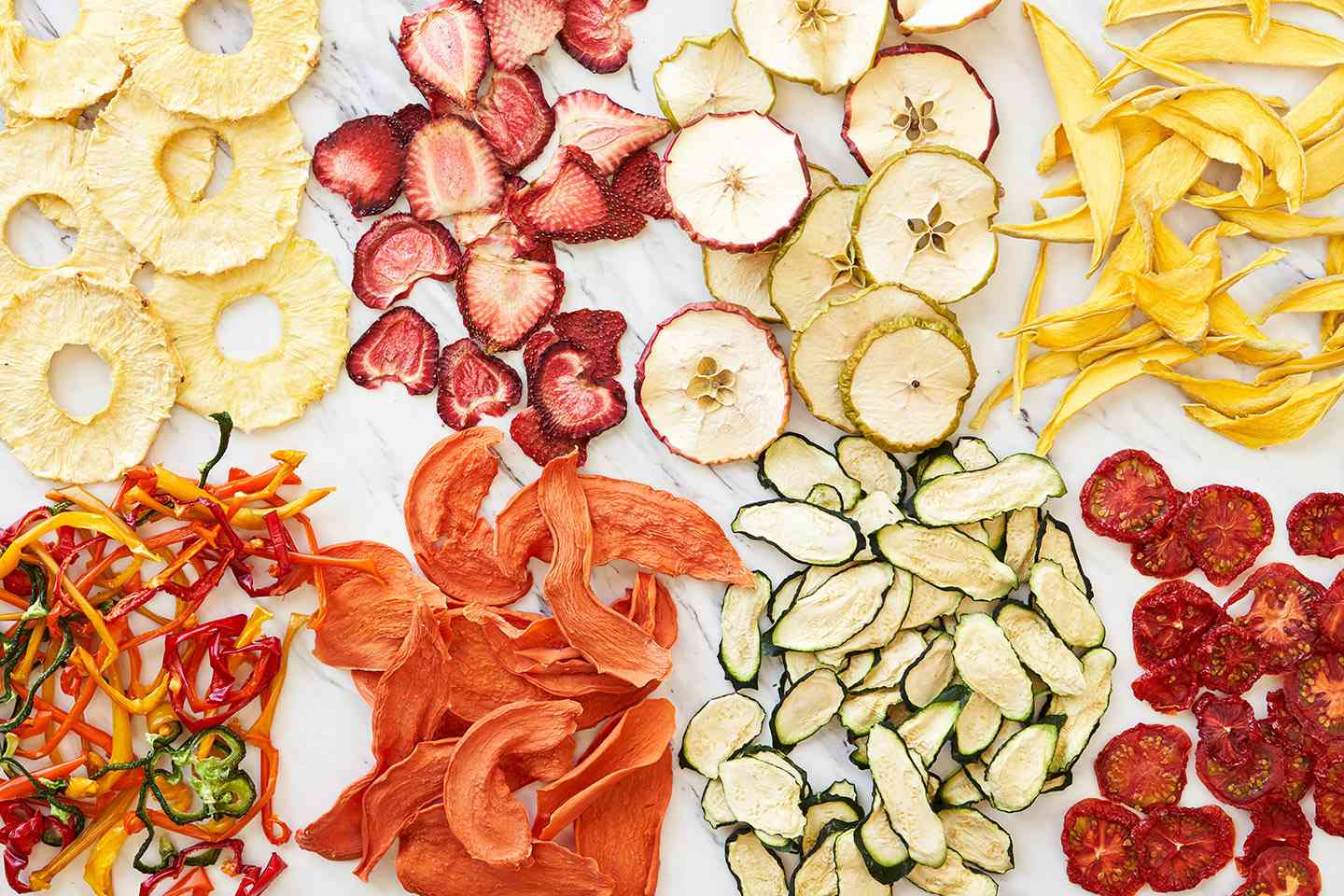

Latest News
How To Dehydrate Vegetables
Modified: January 22, 2024
Discover the latest news on how to dehydrate vegetables with our comprehensive guide. Learn the best methods and techniques for preserving the nutritional value and flavor of your favorite vegetables.
(Many of the links in this article redirect to a specific reviewed product. Your purchase of these products through affiliate links helps to generate commission for Chicagolandgardening.com, at no extra cost. Learn more)
Table of Contents
Introduction
Dehydrating vegetables is a great way to preserve their freshness and nutritional value for an extended period of time. Whether you have a surplus of homegrown veggies, want to take advantage of a good deal at the farmer’s market, or simply want to incorporate more vegetables into your diet, dehydrating them can be a practical and cost-effective solution.
By removing the water content from vegetables, dehydration helps to inhibit the growth of bacteria, mold, and other microorganisms that can spoil food. Moreover, dehydrated vegetables retain most of their vitamins, minerals, and antioxidants, making them an excellent choice for those looking to maintain a healthy lifestyle.
In addition to their long shelf life and nutritional benefits, dehydrated vegetables are incredibly versatile. You can rehydrate them in soups, stews, and sauces, or use them as flavorful additions to salads, sandwiches, and snacks. Their concentrated flavors can elevate any dish and add a burst of natural goodness to your culinary creations.
In this article, we will explore the various benefits of dehydrating vegetables, guide you on how to choose and prepare them for dehydration, discuss different dehydration methods, and provide tips and tricks on storing and using dehydrated vegetables. By the end of this article, you will have all the necessary knowledge and confidence to embark on your own vegetable dehydration journey.
Benefits of Dehydrating Vegetables
Dehydrating vegetables offers a plethora of benefits that make it a popular choice among home cooks and food enthusiasts alike. Here are a few key advantages of this preservation method:
- Extended Shelf Life: Dehydrating vegetables significantly extends their shelf life, allowing you to enjoy your favorite produce long after their peak season. With proper storage, dehydrated vegetables can last for months or even years, making it a convenient way to stock up on your favorite vegetables.
- Nutritional Content: Dehydrating vegetables helps to retain their nutritional content, including vitamins, minerals, and antioxidants. While some nutrient loss may occur during the dehydration process, the majority of the essential nutrients, such as vitamin C, fiber, and potassium, remain intact. This makes dehydrated vegetables a healthy and convenient option for maintaining a balanced diet.
- Convenience: Dehydrating vegetables creates lightweight and compact food items that are easy to store and transport. They take up minimal space in your pantry or backpack, making them perfect for camping trips, hiking adventures, and emergency food supplies. Plus, since they do not require refrigeration, they can be easily incorporated into your on-the-go meals or used as a backup during power outages.
- Cost-Effective: Buying fresh vegetables can be expensive, especially if you want to enjoy them off-season. Dehydrating vegetables allows you to take advantage of bulk purchases, sales, or your own garden harvest, saving you money in the long run. Additionally, it helps reduce food waste by preserving excess produce that might otherwise go unused.
- Enhanced Flavor: Dehydrating vegetables concentrates their natural flavors, resulting in intensified taste profiles. As the water content is reduced, the flavors become more pronounced, giving your dishes a burst of rich and robust flavors. Dehydrated vegetables can add depth and complexity to soups, pasta sauces, stir-fries, and more.
- Reduced Storage Space: Compared to fresh vegetables, dehydrated vegetables take up significantly less storage space. This is particularly advantageous for those with limited pantry space or those who prefer to stock up in bulk. Their compact size also makes it easier to stay organized and find the specific vegetables you need without rummaging through a cluttered cupboard.
These advantages make dehydrating vegetables an excellent choice for those looking to enjoy the benefits of fresh produce throughout the year while minimizing waste and maximizing convenience.
Choosing and Preparing Vegetables for Dehydration
When it comes to dehydrating vegetables, selecting the right produce and properly preparing it are crucial steps for achieving optimal results. Here are some tips for choosing and preparing vegetables for dehydration:
- Choose Fresh, Ripe Vegetables: Select vegetables that are at their peak freshness and ripeness. This ensures that you capture the best flavors and nutritional content in your dehydrated vegetables. Avoid using overripe or bruised vegetables, as they may not dehydrate well.
- Wash and Clean: Thoroughly wash your vegetables to remove any dirt, debris, or pesticides. Gently scrub them under cool running water, using a vegetable brush if needed. Pat them dry with a clean towel or let them air dry before proceeding with the dehydration process.
- Remove Excess Moisture: Before dehydrating, it is important to remove excess moisture from your vegetables. Use a paper towel or kitchen towel to gently blot away any moisture. Alternatively, you can use a salad spinner to remove excess water by spinning the vegetables in it.
- Peel or Slice: Depending on the type of vegetable, you may need to peel or slice them before dehydrating. For example, root vegetables like carrots and potatoes should be peeled, while others like bell peppers and zucchini can be sliced into thin rounds or strips. The thickness of the slices can vary based on personal preference and the desired texture of the final dehydrated product.
- Blanching: Blanching certain vegetables before dehydrating can help to preserve their color, texture, and nutritional content. Blanching involves briefly immersing the vegetables in boiling water and then immediately transferring them to an ice bath to halt the cooking process. This step also helps to remove any surface contaminants. Some vegetables that benefit from blanching include broccoli, cauliflower, green beans, and peas.
- Patience and Uniformity: Ensure that the vegetable slices or pieces are of uniform size to ensure even dehydration. This will help them dry evenly and prevent some pieces from becoming over-dried while others remain under-dried. Remember, patience is key. Don’t rush the dehydration process; allow the vegetables to fully dry according to the recommended time and temperature settings for your chosen dehydration method.
By following these guidelines, you can ensure that your vegetables are properly prepared for dehydration, resulting in flavorful and high-quality dehydrated vegetables ready for storage and future use.
Methods of Dehydration
There are several methods available for dehydrating vegetables, each offering its own advantages and considerations. Here are the most common methods of dehydration:
- Using a Dehydrator: A dehydrator is a dedicated appliance designed specifically for dehydrating food. It utilizes a consistent temperature and airflow to remove moisture from vegetables. Dehydrators typically have multiple trays or shelves, allowing you to dry a large quantity of vegetables at once. They often come with adjustable temperature settings to accommodate different types of produce. Using a dehydrator is the most efficient and reliable method as it provides optimal drying conditions.
- Using an Oven: If you don’t have a dehydrator, an oven can be used as an alternative for vegetable dehydration. Set your oven to the lowest possible temperature, usually around 140°F (60°C). Place the vegetable slices or pieces on baking sheets lined with parchment paper or silicone mats. Keep the oven door slightly ajar to allow the moisture to escape. Regularly check the progress and rotate the trays if needed to ensure even drying. While oven drying may take longer than using a dehydrator, it is a viable option for those without specialized equipment.
- Air Drying Vegetables: Air drying is the most primitive method of dehydration and requires a dry, warm, and well-ventilated space. This method is ideal for regions with low humidity. Simply spread your vegetables out on clean mesh screens or racks and place them in an area with good air circulation. Protect them from direct sunlight and pests. Air drying can take several days or even weeks depending on the climate and the type of vegetable. It is a slow process, but it preserves the flavors and nutrients effectively.
Whichever method you choose, it is important to monitor the drying progress and ensure that the vegetables are completely dry before storage. They should be brittle and snap easily when bent. Properly dried vegetables will have an extended shelf life and be ready to be stored or used in various culinary creations.
Using a Dehydrator
A dehydrator is an excellent tool for efficiently and effectively dehydrating vegetables. Follow these steps to use a dehydrator for preserving your favorite produce:
- Preparation: Wash and prepare your vegetables as mentioned earlier, ensuring that they are clean and properly sliced or diced.
- Arrange Vegetables: Place the vegetable slices or pieces in a single layer on the dehydrator trays. Avoid overcrowding to allow proper air circulation and even drying.
- Set Temperature and Time: Adjust the temperature settings on your dehydrator according to the recommendations for the specific vegetables you are dehydrating. Higher temperatures may be suitable for herbs and leafy greens, while lower temperatures are ideal for more delicate vegetables. Refer to the manufacturer’s guidelines or drying charts for specific recommendations. Set the timer based on the estimated drying time for your vegetables.
- Drying Process: Place the trays in the dehydrator and close the unit securely. Allow the dehydrator to run until the vegetables are thoroughly dried. This process can take anywhere from a few hours to a full day, depending on the type and moisture content of the vegetables.
- Check for Dryness: Regularly check for dryness by removing a few vegetable pieces and allowing them to cool. Once the pieces are cool, check for any signs of moisture or pliability. If they are brittle and snap easily, they are adequately dehydrated. If they are still slightly flexible or feel damp, return them to the dehydrator for additional drying time.
- Cooling and Storing: Once the vegetables are fully dehydrated, turn off the dehydrator and allow the trays to cool. Once cooled, remove the vegetables from the trays and let them cool completely at room temperature before transferring them to airtight containers or storage bags. Label the containers with the name of the vegetable and the date of dehydration.
A dehydrator simplifies the vegetable drying process by providing controlled temperature and airflow, resulting in consistent and efficient dehydration. This method ensures that your vegetables are properly dried while retaining their nutritional value, flavors, and textures.
Using an Oven
If you don’t have a dehydrator, using an oven is an alternative method for dehydrating vegetables. Here’s how you can use your oven to preserve your favorite produce:
- Preparation: Wash and prepare your vegetables as mentioned earlier, ensuring they are clean and properly sliced or diced.
- Preheat and Set Temperature: Preheat your oven to the lowest possible temperature, typically around 140°F (60°C). It’s important to use a low temperature to prevent cooking the vegetables instead of dehydrating them.
- Arrange Vegetables: Place the vegetable slices or pieces on baking sheets lined with parchment paper or silicone mats. Arrange them in a single layer, ensuring they are not touching each other. This allows for proper airflow and even drying.
- Oven Drying: Place the trays with the vegetables in the preheated oven. Keep the oven door slightly ajar to allow moisture to escape. This can be achieved by placing a wooden spoon or oven-safe object in the door to keep it slightly open. The slight opening will help with air circulation and prevent the vegetables from steaming as they dehydrate.
- Rotate and Check Progress: Check the progress of the vegetables regularly and rotate the trays if needed to ensure even drying. Depending on the type and moisture content of the vegetables, oven drying can take several hours to a full day.
- Check for Dryness: To check if the vegetables are dry, remove a few pieces from the oven and allow them to cool completely. If they are brittle and snap easily, they are adequately dehydrated. If they are still pliable or have any signs of moisture, return them to the oven for additional drying time.
- Cooling and Storing: Once the vegetables are fully dehydrated, turn off the oven and leave the trays inside to cool. After cooling, transfer the vegetables to airtight containers or storage bags. Remember to label the containers with the name of the vegetable and the date of dehydration.
While using an oven for dehydration may take longer compared to a dehydrator, it is a viable option for those without specialized equipment. Just ensure that the oven temperature remains low and consistent throughout the drying process to achieve optimal results.
Air Drying Vegetables
Air drying is the most traditional and straightforward method for dehydrating vegetables. While it may take longer than using a dehydrator or oven, air drying is easy and requires minimal equipment. Follow these steps to air dry your vegetables:
- Preparation: Wash your vegetables thoroughly to remove any dirt or debris. Trim and cut them into uniform sizes to ensure consistent drying.
- Choose a Suitable Location: Select a location for drying your vegetables that is warm, dry, and well-ventilated. Choose a spot indoors away from direct sunlight to protect the vegetables from heat and UV degradation.
- Spread Out the Vegetables: Place the vegetable slices or pieces in a single layer on clean mesh screens, trays, or racks. Ensure that the vegetables are not touching or overlapping, allowing air to circulate freely around them.
- Avoid Contamination: Protect the vegetables from dust, insects, and other contaminants by covering them with cheesecloth or a fine mesh netting. This will help prevent pests from accessing and damaging your drying vegetables.
- Patience is Key: Allow the vegetables to air dry naturally in the chosen location. The drying time will vary depending on the moisture content of the vegetables, humidity levels, and air circulation. It can take several days to weeks for the vegetables to fully dehydrate.
- Check for Dryness: Regularly check the vegetables for dryness by touching and inspecting them. The vegetables should be brittle, crisp, and without any signs of moisture. You can also perform a snap test by breaking a piece in half – if it snaps easily, it is dry.
- Storage: Once the vegetables are fully dried, allow them to cool completely at room temperature. Then transfer them to airtight containers, glass jars, or storage bags. Label the containers with the name of the vegetable and the date of dehydration.
Air drying vegetables is a slow and traditional method, but it can yield excellent results. It preserves the natural flavors, colors, and nutritional content of the vegetables, making them a fantastic addition to your pantry for future use.
Storing Dehydrated Vegetables
Proper storage is essential to maintain the quality and longevity of dehydrated vegetables. Follow these guidelines to ensure your dehydrated vegetables stay fresh and flavorful:
- Cool Completely: Before packaging or storing dehydrated vegetables, ensure they have cooled completely to room temperature. This helps prevent condensation, which can lead to moisture and spoilage.
- Airtight Containers: Transfer your dehydrated vegetables to airtight containers that are moisture-proof and made of food-safe material. Mason jars with vacuum-sealed lids, ziplock bags, or vacuum-sealed bags work well for this purpose. Make sure the containers are clean and dry before adding the vegetables.
- Label and Date: Clearly label each storage container with the name of the vegetable and the date of dehydration. This will help you keep track of their freshness and rotation, particularly if you have multiple types of vegetables in your pantry.
- Cool, Dark, and Dry Location: Store your dehydrated vegetables in a cool, dark, and dry place, preferably away from direct sunlight or heat sources. Exposure to light, heat, and moisture can cause deterioration and loss of flavor and nutrition.
- Avoid Oxygen Exposure: Oxygen can lead to oxidation and loss of quality in dehydrated vegetables. If using jars, consider adding oxygen absorbers to remove excess oxygen and maintain product freshness. In the case of ziplock or vacuum-sealed bags, squeeze out as much air as possible before sealing.
- Regularly Inspect: Periodically check stored dehydrated vegetables for signs of moisture, pests, or spoilage. If you notice any signs of spoilage, such as mold or an off odor, discard the affected vegetables immediately to prevent contamination.
- Rotate Your Stock: To ensure the best quality, practice the first-in, first-out rule. Consume older dehydrated vegetables before using newer batches. This helps prevent any vegetables from sitting for too long and losing their quality over time.
By following these storage guidelines, you can preserve the flavor, texture, and nutritional value of your dehydrated vegetables for an extended period. This allows you to enjoy the taste of your favorite vegetables throughout the year and minimize food waste.
Rehydrating and Using Dehydrated Vegetables
Rehydrating dehydrated vegetables is a simple process that brings them back to their original state, allowing for their use in a variety of dishes. Here’s how you can rehydrate and use your dehydrated vegetables:
- Soaking Method: Place the desired amount of dehydrated vegetables in a bowl and cover them with boiling water or vegetable broth. Use a 1:1 ratio of vegetables to liquid. Let them soak for about 15 to 30 minutes, stirring occasionally. The vegetables will gradually absorb the liquid and rehydrate to their original texture.
- Cooking Method: If you’re incorporating dehydrated vegetables into a dish that requires cooking, you can add them directly to the pot or pan. The moisture in the dish will rehydrate the vegetables as they cook. Ensure that there is enough liquid in the recipe to adequately rehydrate the vegetables.
- Adjust Consistency: Depending on the texture you desire for your dish, you can adjust the amount of liquid used in the rehydration process. Adding more liquid will result in softer vegetables, while using less liquid will yield a slightly firmer texture.
- Integrate into Recipes: Rehydrated vegetables can be used in various recipes, such as soups, stews, stir-fries, salads, casseroles, and pasta dishes. They add flavor, texture, and nutritional value to your meals. Experiment with different combinations and techniques to find your favorite ways to utilize them.
- Blend or Puree: If you prefer a smoother texture, rehydrated vegetables can be blended or pureed. This is particularly useful for adding them to dips, spreads, sauces, or baby food.
- Enhance Flavor: To enhance the flavors of rehydrated vegetables, consider adding seasonings, herbs, spices, or sauces during the rehydration or cooking process. This will infuse the vegetables with additional taste and make them more enjoyable to eat.
- Storage of Rehydrated Vegetables: If you have any leftover rehydrated vegetables, store them in an airtight container in the refrigerator and use them within a few days. Be sure to label the container with the date to monitor their freshness.
Rehydrated vegetables offer the convenience of readily available produce that can be used in a wide range of recipes. They allow you to enjoy the flavors and benefits of fresh vegetables regardless of the season or availability. Get creative in the kitchen and explore the endless possibilities of incorporating dehydrated vegetables into your meals.
Tips and Tricks for Dehydrating Vegetables
Dehydrating vegetables can be a fun and rewarding process. Here are some helpful tips and tricks to ensure successful dehydration:
- Uniform Slicing: Aim for uniform slices or pieces to ensure even drying. This helps to maintain consistent dehydration time and prevents some pieces from becoming over-dried while others remain under-dried.
- Pre-treat for Browning: Some vegetables, like potatoes and apples, tend to brown during dehydration. To prevent browning, you can soak them in a solution of water and lemon juice or vinegar for a few minutes before drying.
- Spice it Up: Experiment with adding spices or seasonings to your vegetables before drying. This can add extra flavor and make your dehydrated vegetables more versatile in various recipes.
- Rotate and Rearrange: If you’re dehydrating multiple trays at once in a dehydrator, rotate and rearrange the trays periodically. This helps to ensure even drying, as some areas of the dehydrator may have stronger airflow or heat distribution.
- Keep a Record: Take notes on the drying time, temperature, and desired doneness for different vegetables. This will help you in future dehydration sessions, allowing you to fine-tune the process and achieve consistent results.
- Consider Blanching: Blanching certain vegetables before dehydrating can help preserve their vibrant colors, textures, and nutrients. While not necessary for all vegetables, blanching can be beneficial for items like green beans, broccoli, and carrots.
- Combine Similar Drying Times: When dehydrating multiple types of vegetables, try to group those with similar drying times together. This allows you to efficiently manage the dehydration process and prevents some vegetables from becoming overdried while waiting for others to finish.
- Rehydrate with Liquid Flavors: Instead of rehydrating your vegetables in plain water, consider using vegetable broth, stock, or infused liquids to add extra flavor during the rehydration process.
- Dehydrate Herbs Separately: When drying herbs, it is best to keep them separate from other vegetables. Herbs often have shorter drying times, and the strong aromas may permeate and affect the flavors of other vegetables in the dehydrator.
- Use Multi-level Dehydrators: If you’re an avid dehydrator, consider investing in a dehydrator with multiple trays or shelves. This allows you to dehydrate a large quantity of vegetables simultaneously, saving time and energy.
By keeping these tips in mind, you can enhance your dehydrating experience and achieve excellent results with your preserved vegetables. Don’t be afraid to get creative and tailor the process to your preferences and culinary needs!
Conclusion
Dehydrating vegetables is a fantastic way to preserve their freshness, nutritional value, and flavors for an extended period. Whether you have a bountiful garden harvest, want to take advantage of seasonal produce, or simply enjoy the convenience of having dried vegetables on hand, this preservation method offers numerous benefits.
We explored the various benefits of dehydrating vegetables, including the extended shelf life, retained nutritional content, convenience, cost-effectiveness, enhanced flavor, and reduced storage space. Additionally, we discussed the different methods of dehydration, such as using a dehydrator, oven drying, and air drying, each offering unique advantages depending on your equipment and preferences.
Properly choosing and preparing vegetables for dehydration is crucial to ensure optimal results. We shared tips on selecting fresh vegetables, washing and cleaning them, removing excess moisture, and slicing or blanching when necessary.
Storing dehydrated vegetables in airtight containers in a cool, dark, and dry location helps to maintain their quality and longevity. We discussed the importance of labeling the containers and regularly inspecting the vegetables for signs of spoilage.
When it comes time to use your dehydrated vegetables, we provided step-by-step guidance on rehydrating them through soaking or cooking methods. These rehydrated vegetables can be incorporated into a wide range of recipes, enhancing the flavors and nutritional value of your dishes.
Lastly, we shared some valuable tips and tricks to ensure successful dehydration, such as uniform slicing, pre-treating for browning, and rotating trays for even drying. By following these tips, you can achieve consistent and delicious results with your dehydrated vegetables.
With the knowledge and insights gained from this article, you are well-equipped to embark on your own vegetable dehydration journey. Start exploring the wonderful world of dehydrating vegetables and enjoy the convenience, flavors, and nutritional benefits that come with it.
